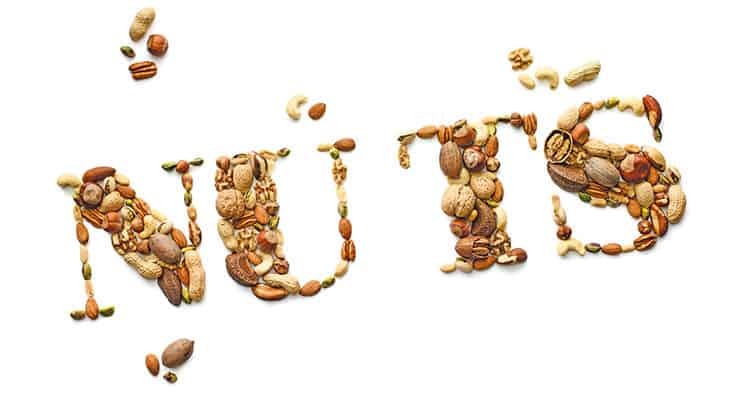
At culture, we love foods that tell stories. That’s what keeps us hooked on curds—but cheese isn’t the only fare with tales to tell. Nuts may be diminutive in stature, but trust us: These little morsels are big on drama. We’ve uncovered accounts of deception (most nuts are not, in fact, nuts), intrigue (nutty cheese aromas baffle scientists), and lifelong devotion (a 92-year-old nutcracker collector shares secrets). There are stories of sickness (a blight felled American chestnut trees), strife (World War II had a role in Nutella’s invention), and redemption (wild nuts are back in vogue). And the best part of these yarns? Edible protagonists.
Know Your Nuts
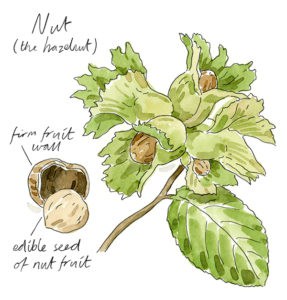
From forests to fields, old-world groves to new-world plantations, caveman dwellings to your local dive bar: Nuts are found wherever hungry humans have roamed. Shielded by glowing leafy greens and sweet, ripe fruits that tempt us, nuts lurk in the background, encased in rigid, unyielding shells. But the moment our ancestors figured out how to smash two rocks together, the treasures within became diet fixtures.
It makes sense: Since the nuts we eat are meant to give life to new bushes or trees, they’re packed with nutrients, compounds that protect against disease, and energy—often in the form of oil and heart-healthy fats. Nuts exude fragrant compounds when fresh; cooking them encourages reactions between amino acids and sugars, yielding a multitude of evolving aromas.

Today we toss back the easy-to-munch morsels without giving much thought to where they come from—but botany reveals some mind-bending facts. Did you know that a nut is actually a fruit? It’s a specific type of fruit with a single seed that rests, unattached, inside a hard, closed shell. Think of the hazelnut: On the tree’s slim branches hang dry, reddish-brown, heart-shaped pods. When cracked, the small, beige, aromatic kernels emerge. This is the seed, the edible part of the nut fruit.
The plot thickens. Did you know that almonds, pecans, walnuts, and a whole range of other “nuts” are not actually nuts at all? Consider the almond: On the tree it’s a soft, green, oval fruit belying little hint of what’s inside. Peel back the fleshy exterior and you’ll find a pit resembling a peach or plum core. That’s because, like peaches and plums, the almond is a drupe: a fleshy fruit with a stone inside. Within that stone is the seed, what we know as the edible almond.
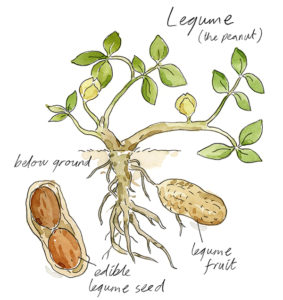
Complicating things further, the peanut is in an entirely different category. Unlike the pods of drupes and nuts that hang from trees, peanut pods grow underground beneath bushes. Classified as a legume, the peanut is a closer relative to beans and peas than to any of the other nuts we eat.
While botany offers a narrow definition of the nut, the seeds or seed-containing fruits found in nuts, drupes, or legumes dohave much in common: They’re nutrient-dense with an oily composition, an aromatic aura, and a delicious multitude of uses. That’s why our guide focuses on “culinary” nuts, a widely accepted, broad category that includes a range of drupes and legumes—because a (nut) party is more fun when everyone’s invited.
Get Cracking
Noreen Guizar, cheese buyer and general manager at Fisher’s Cheese & Wine in Larkspur, Calif.—formerly the Cheese School of San Francisco—suggests a nut-centric cheese plate for your nibbling pleasure.
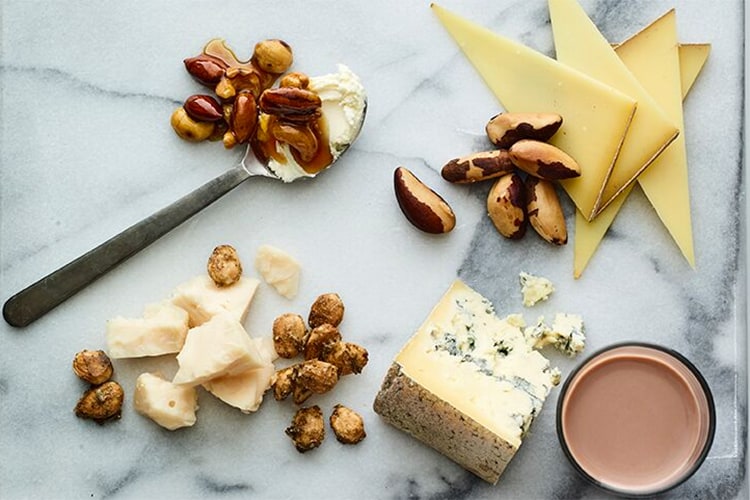
Marcel Petite Comté Reserve + ROASTED, SALTED BRAZIL NUTS
“I’d always pilfer Brazil nuts from the nut bowl at our family parties—I gravitated to their unique texture. Tyrosine crystals in this Marcel Petite Comté mimic the crunchy, almost granular nuts, while the nuts highlight the Alpine classic’s brown-butter flavor.”
Crave Brothers Farmstead Cheese Mascarpone + BONNIE’S JAMS NUTS & HONEY
“The silky richness of my favorite mascarpone is accentuated by sweet, delicate, honey-soaked nuts. Adding fresh fruit, such as apples, contributes a pop of acidity that brightens the decadent combo. It’s like a deconstructed parfait—perfect for brunch.”
L’Amuse Brabander + FISHER’S CHEESE & WINE HERBES DE PROVENCE ALMONDS
“The acidic tang of goat’s milk highlights lavender in the almonds’ herb mix; the creamy texture plays off the sugary crunch of the almonds. A trip to Provence sounds like a great idea right now.”
Point Reyes Farmstead Cheese Company Bay Blue + CHOCOLATE-HAZELNUT MILK
“Add a tablespoon of chocolate syrup to a glass of fancy-hippie hazelnut milk. Take a big swig with a bite of Bay Blue and discover a combination that makes me feel like a kid again. It’s chocolate milk with a grown-up twist: a blue cheese chaser.”
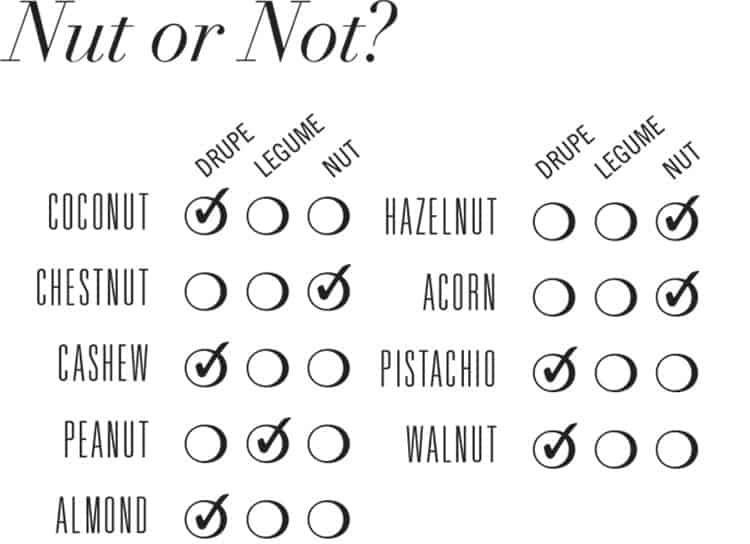
How to Spice Nuts
1. Heat oven to 300°F. Lightly grease a cookie sheet. For each pound of nuts, combine ½ cup granulated sugar, ¼ cup brown sugar, 1 tablespoon salt, and 4 tablespoons of desired spice mix in a bowl (we like equal parts cayenne, cumin, and cinnamon).
2. In a separate bowl, beat 1 egg white with 1 tablespoon water until frothy. Add nuts and stir to coat.
3. Sprinkle nuts with sugar and spice mixture; toss until well coated. Spread nuts onto cookie sheet in a single layer. Bake 30 to 45 minutes or until golden brown.
Why Do We Sense Nutty Flavors in Cheese?

Aromas we detect while sniffing or chewing result from an infinitely varying mix of chemical compounds. Specifically these are “volatile” compounds: substances that can vaporize and float through the air to reach olfactory receptors in our nasal cavities.
In cheese, volatile aroma compounds result from enzymes that break down milk’s basic components—fat, protein, and carbohydrates. While an aged wheel might contain hundreds of these compounds, none are unique to cheese; they’re found elsewhere in nature, too. That’s why there’s not a true “cheese” smell—and why curds so often yield scents that remind us of other foods, such as fruit, meat, or nuts.
When we look for the source of cheese’s “nutty” flavors, we’re really seeking specific chemicals, or combinations of chemicals, that remind us of nuts.
That’s exactly what researchers at North Carolina State University did in a groundbreaking 2004 experiment. First pro tasters distinguished between aged cheddars with and without nutty aromas. Then the team isolated volatile aroma compounds from those cheeses. Nutty and non-nutty cheeses displayed an important difference: Nutty varieties had higher concentrations of compounds known as Strecker aldehydes. Curious, the scientists added extra Strecker aldehydes to cheddars—and tasters perceived those cheeses as even nuttier. Connecting the sensory perception of nutty flavors to the presence of precise chemical compounds was a major step forward in flavor science—but Strecker aldehydes are likely just one nutty culprit among many.
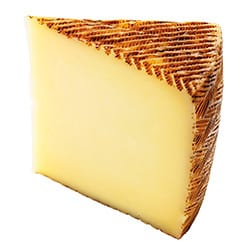
“Defining the cause of nutty flavor in cheese has been difficult,” says John Lucey, director of the Center for Dairy Research at the University of Wisconsin-Madison. “There are more questions than answers. For other cheeses there are likely other causes—organic acids and a very wide range of chemical compounds.”
Just as there’s no single “cheese” aroma, there’s no one “nut” aroma, either.
That’s why the nut industry has also examined ways to characterize flavor. In 2006 the Almond Board of California worked with professional tasters to release a lexicon that included a list of 36 aromas commonly detected in almonds. Since nuts (like cheeses) are packed with flavor compounds, and dozens of almond strains grow in California alone, the reference helps researchers, producers, and retailers communicate when comparing varieties and cooking methods. Similar guides developed for peanuts and cashews display the incredible variety of aromas that are found in nuts, from cod liver oil to fried chicken to—yes—cheese, proving just how dizzying flavor science can be.
Q&A: Miyoko Schinner
The founder of Miyoko’s Kitchen—a company that makes vegan cheeses from organic cashew milk in Fairfax, Calif.—dishes on the new nut cheese niche.

Why use cashews in vegan cheese?
We do apply somewhat traditional cheesemaking techniques to our products. We use lactic acid fermentation to drop pH [levels] and develop flavor profile, and we age some of the cheeses. Nuts respond really well because they are high in fat and have some protein. Cashews are the cow’s milk equivalent in the nut world—a very neutral flavor profile. You can do a lot of stuff on top of that. You can create different textures depending on what cultures you use, whether you age it or not, whether you heat it or not.
Why is your product labeled “cultured nut product” and not “vegan cheese”?
The FDA defines cheese as the lacteal secretions of one or more cows…and the dairy industry has come down hard on “plant-based imitators,” as they call them, causing plant-based cheeses and alternative companies to stop calling products “milk” or “cheese.” We played around with it and decided on “cultured nut product.”
How do you define cheese?
The world is changing, and I believe that cheese is really about fermentation. It’s about transforming some sort of milk-like substance into a solid and dropping the pH. At one time it was only done with milk, but now we can do it with plant-based proteins. So why not?
Interested in nut cheese? Review our tasting notes on Miyoko’s Kitchen cheeses.

How to Make Nut Milk
1. Place raw, unseasoned nuts (almonds, macadamias, cashews, peanuts, pecans, hazelnuts, or a mix) in a bowl and fill with water. Let soak at least 12 hours or overnight at room temperature. Drain.
2. Add 1 part soaked nuts and 4 parts hot (not boiling) water to a blender. (Flavorings are optional: Add a pinch of salt and/or a teaspoon of a sweetener per cup of nuts to start—honey, maple, or agave—adding more after blending to taste.) Blend on high at least 2 minutes or until smooth.
3. Strain milk through a cheesecloth or nut milk bag (available online). Discard pulp. Refrigerate milk and consume within 5 days.
Putting Nature’s Bounty to Work
Clark Barlowe owns Heirloom Restaurant in Charlotte, N.C., famous for its wild-nut foraging program. Here’s how the chef uses his finds:

- Beet-and-Butter Lettuce Salad with Goat Lady Dairy Chèvre, Black Walnuts, and Persimmon Vinaigrette. “We grate black walnuts atop salads. With so much natural fat, they have the mouthfeel of grated parmesan.”
- Acorn-Crusted Golden Tilefish with Onion Pie, Maitake Mushrooms, and Gremolata. “We forage and shell acorns. We leach the tannins out—that’s a weeklong process. Then we dehydrate and powder them. We dredge the fish in acorn flour then sear it.”
- Maple-Apple Cake with Apple Butter, Hickory Nuts, Chantilly Cream, Brown Sugar Caramel, and Gingersnap. “Hickory nuts are incredibly difficult to process. We crack them, then pick through with tweezers to get all the fine shells out. They taste like maple syrup.”
Our Nuttiest Recipes Yet

An extended version of this feature can be found in our 2017 Cheese+ pairings issue. Molly McDonough is a 2018 James Beard Foundation Journalism Award nominee for “Nuts About Nuts.”
Credits: Photography by Andrew Purcell, Styling by Carrie Purcell, Illustrations by Tom Bingham



